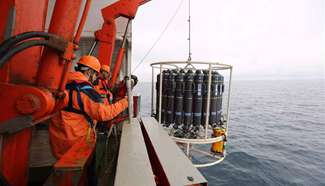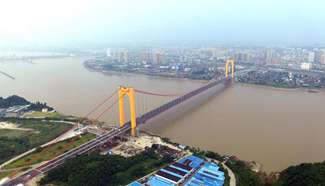SHIJIAZHUANG, July 18 (Xinhua) -- Researchers on Monday started excavation of an ancient port in north China's Hebei Province to help determine where the maritime silk road began.
The excavation, which will last at least six months, is expected to provide more evidence to support the idea that the ancient port of Haifeng was a starting port for porcelain to be transported abroad by ship, said Feng Enxue, an archaeologist at Jilin University.
Located in the port city of Huanghua, the ruins of Haifeng Township cover an area of 2.28 million square meters. In the past three excavations since 2000, archaeologists found the ruins were composed of an ancient port, a cargo collection and distribution zone and a trade zone -- a typical layout for port trading.
"The excavation will help us better figure out the details of the different zones' functions and provide more evidence for the hypothesis that the Haifeng ruins were the northern starting point of the maritime silk road," he said.
Feng proposed in 2014 that Haifeng was the northern starting point of the route during the Song and Jin era (from 960 through 1276) after large amounts of porcelain featuring both southern and northern Chinese styles were unearthed. These artifacts resembled other porcelain discovered in Northeast Asia.
It is widely known that as early as 2,000 years ago, ancient Chinese traders began taking china, silk, textiles and other commodities abroad along the trading route. They left from ports in today's Guangdong and Fujian provinces and sailed to Southeast Asia, Africa and Europe. But the port at the Haifeng ruins has not yet been widely recognized as one of the departure ports.
"Judging from the geographical position and the historical records of Haifeng Township, the porcelain was estimated to have been sold to Northeast Asia, Korea, Japan and even regions beyond," he said, adding he hopes this excavation will strengthen his hypothesis.
Approved by the State Administration of Cultural Heritage, the project is organized by the Cultural Relics Institute of Hebei Province.











